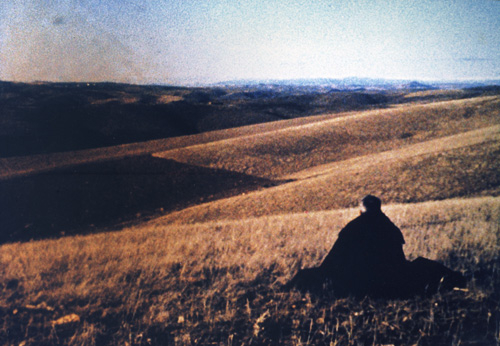
Films by António Reis & Margarida Cordeiro, Stavros Tornes & Charlotte van Gelder, Jean-Marie Straub & Danièle Huillet
‘Once Was Fire’ is part of the programme of the Courtisane Festival (17 – 21 April 2013). Curated by Stoffel Debuysere
What is it the work of these three filmmaker-couples has in common? Perhaps it is passion, the burning desire to craft a cinema of their own, against the grain, against the void, a desire inscribed in every form, always staring right back at us. Perhaps it is attention, a constant consideration for all things equal : the beauty of the moving wind in the trees, the sounds of words spoken, the splendour of the world we don’t care to see in life. Perhaps it is grace, the generosity of artisans meticulously plying their trade, echoing an epoch when cinema and art were not the big words they have become. Perhaps it is risk, the painstaking chance they take in every image, at each moment risking their lives for a look, a sigh, a gesture. Perhaps it is soul, the broken soul of Southern Europe, this ancient theatre of memory where everything is haunted by ghosts of past and future, this land of lost dreams where all and nothing is horizon. Perhaps it is dream, the clarity of an age-old dream reawakening something that has been stifled, forgotten, annulled, in defiance of the storm of progress blowing from paradise. Perhaps it is love, the tender care for people and places, where everyone and everything has a name, where time is suspended and multiplied, inventing new capacities for framing our daunting present. Perhaps, when all is said and done, it is persistence, and the burdensome solitude of those who know all is lost, putting everything at stake to catch a glimpse of a fire that once was.
In collaboration with the Royal Belgian Film Archive, with many thanks to the Cinemateca Portuguesa, the Greek Film center, the Cineteca di Bologna, Barbara Ulrich and Pedro Costa. In the framework of “Figures of Dissent (Cinema of Politics, Politics of Cinema)” (KASK/HoGent).
——————————————————————————————————————————————————————-
António Reis & Margarida Cordeiro
“A way of life that stands under no present law and only pays attention to the wisdom and advice which reach across to us from ancient times,” wrote Franz Kafka in The Great Wall of China. It is this text, read out in the guttural sub-dialect of northeastern Portugal, which is at the heart of Tràs-os-Montes, António Reis and Margarida Cordeiro’s first portrait of the Nordeste Transmontano region, the “frontier of sorrow” between Spain and Portugal. Here, out of reach from the arm of the law, out of sight from the watchful eyes of the capital, another form of community still abides, a deep-rooted communion between men, land, and the seasons. Here, at the crossroads of different ages, haunted by a violent history of inquisition and repression, steeped in ancient myths and primitive rites, time offers resistance. In the words of Rainer Maria Rilke, whose poetry deeply inspired their work: “When behind each shape more that the past lays hidden, when that which lay before us was not the future.” In these rural villages, working from day to day as “peasants of cinema”, Reis and Cordeiro created two magnificent frescos, depicting forms of life that owe absolutely nothing to the imperatives of Empire. It is a world of endurance, always on the verge of disappearing, trees of life blooming and withering alike, caught in the throes of the great round of change.
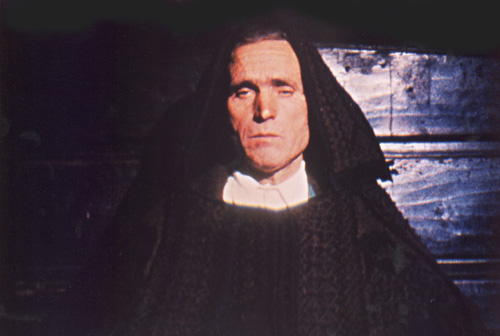
Trás-os-Montes
PT, 1976, 16mm, color, Portugese with French subtitles, 111’
“I have never seen a Portuguese film that speaks of Portugal in such a profound and beautiful way, that is not only about the earth, the people and the faces, but also the dreams, the stories and the layers of millennia. We first see a documentary blossoming, opening up, which offers itself as an ethnographic pearl, after which we evolve towards something that leans more toward science fiction. This section is that of our soul, from the depths of our being. Sensitive to colour, the time, the passing of time: Tras-Os-Montes is a great poem. Like those children who lose themselves in time, we are a people who live as if time never existed.” (Manoel de Oliveira)
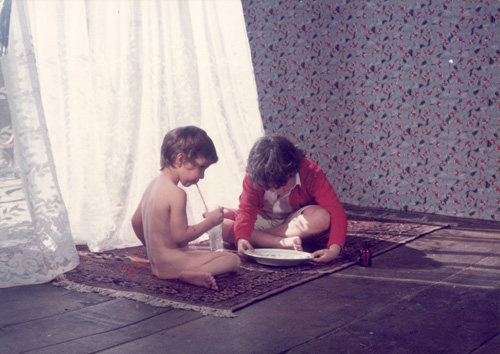
Ana
PT, 1985, 16mm, color, Portugese with French subtitles, 114’
“A film by poets, but also by geologists, anthropologists, sociologists, by all the possible -ologists. Reis and Cordeiro are Portuguese, but not from Lisbon (it is a much too provincial capital city), not even from Porto. They situate their films in this North of Portugal where the tourists never come (they invade the Algarve in hordes, the fools). Beautiful and abandoned landscapes, which have to be perceived as sumptuous ruins; a countryside that is filmed as if it were a city. In Ana, the trees, the roads, the stones of the houses almost have names. Everything is a junction; nothing is anonymous. The film is a consoling buzzing: the sound of the wind causes the images to swell and shrink like a sea. There is emptiness in the heart full of sensations, the way there is an emptiness in this part of Portugal. The films by Reis and Cordeiro record a disorienting situation of emigration, caused by the exodus: the men have left, the children are now left to their games and the elderly are left to guard the places. There is no supervision from the parents here, only the guardianship of grandparents, in a game of glances, fleeting and tender, surprised and serious.” (Serge Daney)
——————————————————————————————————————————————————————-
Stavros Tornes & Charlotte van Gelder
“In cinema, there is this possibility of what is to come, of a new awakening. There is a possibility of a future existence.” Stavros Tornes is one of the forgotten prophets of cinema, poète maudit steeped in the land of myth and tragedy, companion of all the outcasts of the post-industrial society, of all the vagabonds wandering amid the wreckage of Empire. Always choosing the enchantment of the world, in all its exuberance and intemperance, in the face of the disenchantment of the social, tinted by memories of occupation, civil war and dictatorship. In the handful of films he made with his “alter ego”, Charlotte van Gelder, there is no rift between the real and the surreal; reality and the imaginary flow into each other as if the concrete world were inhabited by ancient animistic forces. In the course of seemingly aimless voyages through space and time, adrift in a dérive through foreign landscapes, we are offered the unexpected wonder of another humanity in its many figures: the return to the origins, the descent to the netherworld, the arrival in the promised land. “Homer operating the camera, Heraclitus recording the sound”, as film critic Louis Skorecki once wrote. A cinema before cinema: primordial, unattainable, mythical. A cinema that makes us whisper, in complete bewilderment, “Where am I?” Not for fear of being lost, but because of the revelation of being in a deep sleep, suddenly awakening, and not knowing what estranged world we have woken up to.
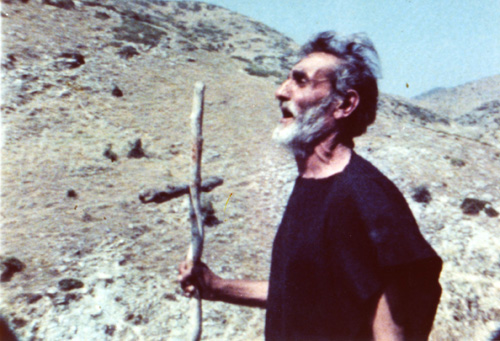
Balamos
GR, 1982, 16mm, color, Greek with English subtitles, 80′
“Balamos is a popular film, though not easy to absorb; it puts forward a passionate, persistent claim to the poetry and dreams which man has earned for himself, in the teeth of all the powers that be. Balamos is about the return to the East, about water and earth, and the anguished concern with freedom. It is a popular fiction, not a populistic, moralistic intrigue. It is firmly situated whithin our culture, but not in a localized, pictureque sense. It is permeated by time, but not by calendar markings. It is both very ancient and very new. It ignores the facilities of photo-romances and seeks out the image. Tornes follows a cinematic line that grows out of one of the shots in Eisenstein’s Que viva Mexico. There are underlying emotional repercussions from the work of the Taviani brothers and Straub. The popular quality of a film like Balamos can never be quite accepted in an age that preaches the trade unionist version of freedom. It is a film that any of us could have produced. But the technocrats of the film industry the technicians of authority have deprived us of that ability. All we can do is immerse ourselves in these images, ride Balamos’ horse in order to recapture a human right which is only too often ignored or repressed: the right to dream. (Antonis Moschovakis)
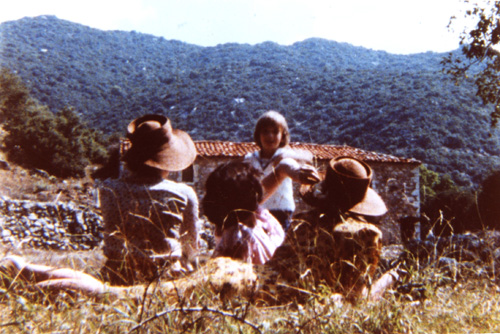
Karkalou
GR, 1984, 16mm, color, Greek with English subtitles, 83′
“Tornes has tried to fragment the course of life of a man, whose journey through the 20th century to a certain degree presupposes a collective memory, and then put it back together again. A man, who witnesses his own death, becomes the narrator of a challenging life. Disillusioned love affairs go hand-in-hand with revolutionary dreams, and South American music accompanies images of the Greek desert. The ‘saints’ that have freed themselves from the conventional yoke meet believers who embark at all costs in search of salvation and, in particular, everything that transcends, rises above them. ‘The imagination is a quality of the spirit that we can exercise as memory,’ Luis Buñuel had said a little earlier, and Tornes seems to have taken these words literally.” (Illias Kanellis)
——————————————————————————————————————————————————————-
Jean-Marie Straub & Danièle Huillet
“No filmmaker should make a film without it having a minimum of what Cézanne spoke about when he watched his mountain for years on end before being able, one fine day, to capture it and say, ‘Look at this mountain, once it was fire’.” The cinema of Jean-Marie Straub and Danièle Huillet is one of the uttermost concentration, capturing the whirlwind of the world in every tiny inch of matter. The sensible and the intelligible cannot be separated. That is what they have learned from Friedrich Hölderlin: the dream of the community to come is not embodied in laws and governments, but in gestures of life and forms of nature. But for there to be a community, it must be divided, and that is what they have learned from Bertold Brecht: the changeability of the world does not insist on agreement, but on its contradictoriness. Between Brecht and Hölderlin, materialism and mysticism, at once dialectical and lyrical, the films of Straub and Huillet point to an abandoned yet irrefutable truth: we do not live in the best of possible worlds. The roots of Fascism, war, injustice and resistance are revisited by way of much older dramas, recounted by authors such as Cesare Pavese and Elio Vittorini. But these texts are not more important than the people reciting them, the space they find themselves in, or the movement of light and colour shimmering through. What matters, in the end, is the sensible intensity which is always there, always in the present, affirming the enduring capacity for the construction of a new common world: a community of sense.
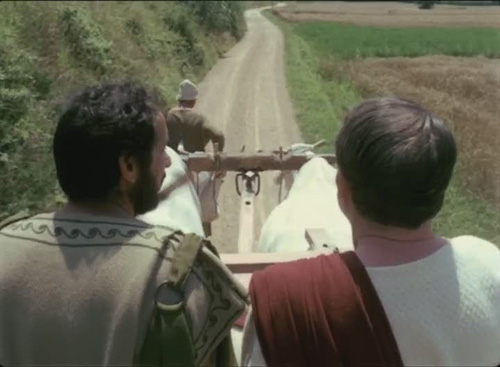
Dalla nube alla resistenza (From the Clouds to the Resistance)
IT, 1978, 35mm, color, Italian with electronic English subtitles, 105’
“Dalla Nube is composed of two separate parts, one mythological, the other modern, without any apparent relation. The Nube part is six of the twenty-seven Dialogues with Leuco (“Dialoghi con Leucò”), written by Cesare Pavese in 1947. The Resistenza part is extracts from another book by Pavese, The Moon and the Bonfires (“La luna e i falo”), published in 1950, a few months before his suicide. This latter part is not a surprise: every Straub film is an examination – archaeological, geological, ethnographic, military as well – of a situation in which men have resisted. To Nietzsche’s claim that “The only being known to us is being that represents itself,” the Straubian would respond that only those who resist exist for sure: resist nature, language, time, texts, gods, God, chiefs, Nazis. Mother and father. This is how the shot, the basic atom of Straubian cinema, is the product, the reste (remainder), or rather the restance (remaining) of a triple resistance: texts resisting bodies, places resisting texts, bodies resisting places. One has to add a fourth: the public resisting shots “designed” this way, stubborn resistance of cinema’s audience to something intractable, something which renounces it as a public”. (Serge Daney)
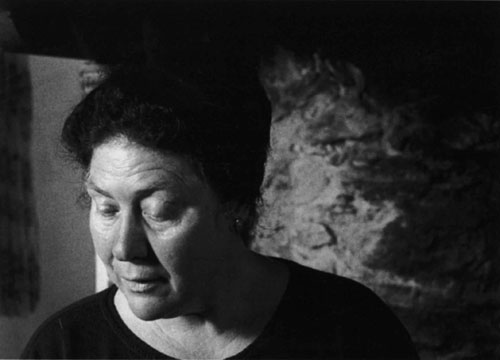
Sicilia!
IT, 1999, 35mm, b/w, Italian with English subtitles, 66’
“Sicilia! is a film that shines both in its own inherent vision and as a highlight in the work of the Straubs, a top that we can reach without extra tools. If, according to the generous idea of Manoel de Oliveira, a film’s true nationality is the country in which it is filmed, then a great deal of the Staubs’ oeuvre is Italian, even if we hear a lot of German and French in it. Few of their films are about the modern world in a direct sense: they are rather elegant peplums from the theatre in which antiquity is always revived, brought alive into modern history. With Sicilia!, it is the Italy of the 20th century, when Mussolini was enacting his parody of the Empire of the Caesars. It is the exploitation of Sicily, the almost African earth, a South that tries for as long as it can to resist the North, and the film a black-and-white poem of the outraged world. Thanks to the voices of actors who had never before spoken Italian so amusingly, the Italy of today is physically represented. It is incomplete, with its empty spaces, intense: the lost soul of Italian cinema. When, as is here the case, it is about oranges that cannot be sold, fish grilled on charcoal, police suspicions, returns to the mother’s house, nightly clandestine meetings in the valley that ultimately come to light, functional objects that no one buys any more, the loss of manual thinking, what is taking place here is the excess or the insufficiency which, as is true in life, gives rise to a film.” (Jean-Claude Biette)